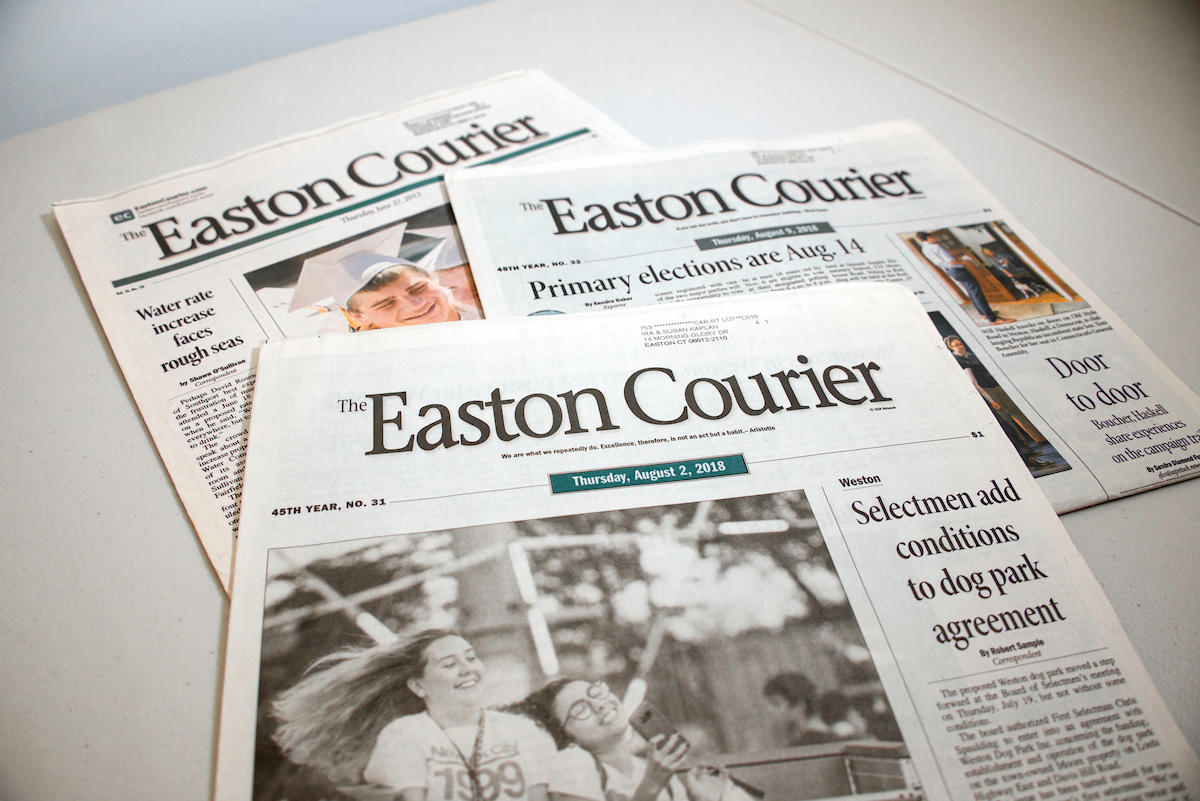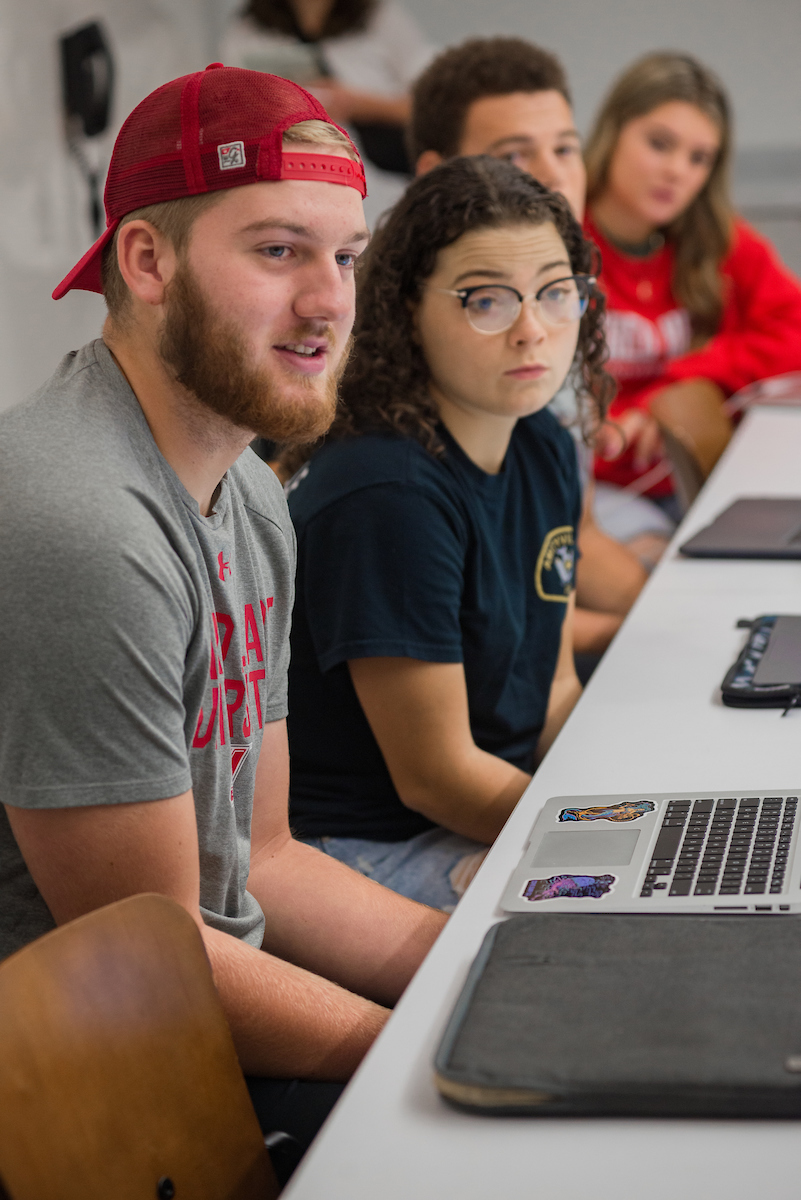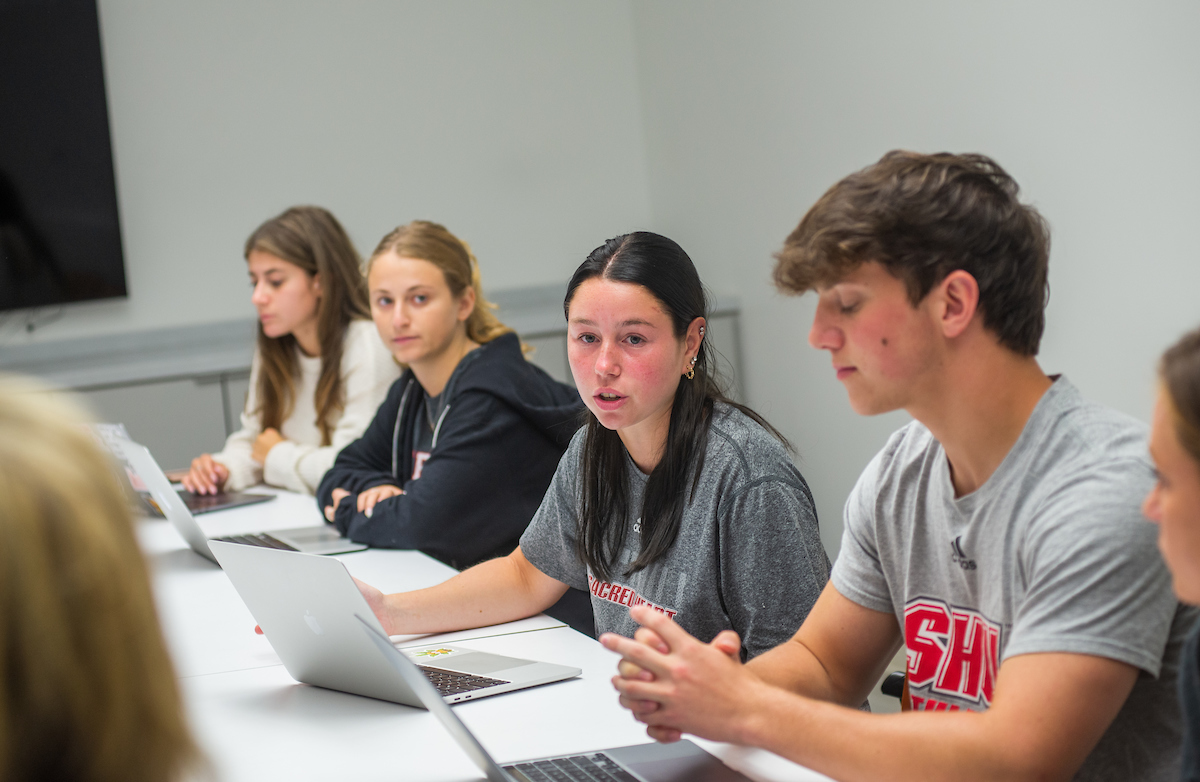By Carolyn Shapiro
In 2018, Hersom Acorn Newspapers sold off its 18 community publications in New England, most of them serving small towns. The vast Hearst Newspaper chain scooped up the bulk of the papers and shuttered many of the smaller ones, including the Easton Courier, covering the Connecticut town that neighbors Sacred Heart University.
James Castonguay, a Sacred Heart professor and director of its School of Communication, Media & the Arts, lives in Redding, the town on the opposite side of Easton. He kept hearing from Easton residents how much they depended on their local paper, and he saw an opportunity for Sacred Heart journalism students.
 Castonguay arranged to resurrect the Easton Courier as an online, nonprofit news outlet that serves 2,500 households in Easton through a partnership with the communications school. Sacred Heart students get credit along with real-life experience while reporting for the Courier.
Castonguay arranged to resurrect the Easton Courier as an online, nonprofit news outlet that serves 2,500 households in Easton through a partnership with the communications school. Sacred Heart students get credit along with real-life experience while reporting for the Courier.
“Across the political spectrum, there was a sense of loss,” he said of the community paper’s closure. People wanted the information the paper provided and were telling him, “I do want to know when the Memorial Day Parade is, and I don’t want to have to go to Facebook.”
Sacred Heart has had a social justice mission since its founding in 1963 by the Catholic Diocese of Bridgeport. Located in Fairfield, the university’s administration encourages its students to reach out to the community, volunteer and seek opportunities for hands-on learning, Castonguay said.
With his Ph.D. in English, Castonguay came to teach at Sacred Heart in 1999 and helped build out its journalism and broadcast program. The communications school has a journalism concentration, but no major. An easy drive to ESPN headquarters in Bristol, Conn., and the major media mecca of New York City, the campus has a strong foothold in broadcasting and houses the student-run public radio station WSHU.
For years, Castonguay wanted a project to fit “Sacred Heart’s ethos,” he said. Students graduate and get good jobs, he acknowledged, but he wanted to offer them a opportunity that merged the school’s social-justice mission with its mantra of real-life experience.
“Students that come here, they are very inclined to do a lot of outreach and service hours. It is part of the culture,” Castonguay said. “It just kind of resonates with the Gestalt and mission of the university and the sensibility.”
Castonguay created a “model for applied learning,” developed around faculty members not necessarily with doctoral degrees but with professional experience. Joe Alicastro, a former producer for NBC News and now director of Sacred Heart’s graduate program in journalism and media production, worked with students to cover Connecticut’s gubernatorial debates, which Hearst Media picked up and distributed across its stations statewide.
 Castonguay brought in Nancy Doniger, who was managing editor of the Easton Courier for Hersom Acorn, to teach a practicum course in reporting. A former Connecticut bureau chief for the New York Times, Doniger became his co-executive editor for the Courier and helped create the Professional Journalism course. Up to15 students each semester get credit for the course while they report for the Courier.
Castonguay brought in Nancy Doniger, who was managing editor of the Easton Courier for Hersom Acorn, to teach a practicum course in reporting. A former Connecticut bureau chief for the New York Times, Doniger became his co-executive editor for the Courier and helped create the Professional Journalism course. Up to15 students each semester get credit for the course while they report for the Courier.
“It’s like a little working newsroom, and they get to do community journalism,” said Ann Marie Somma, a longtime reporter for the Hartford Courant who now teaches the course. “I basically just assign them stories. They literally are the bulk of the reporters during the semester” for the Courier.
An engineering student helps with the web operation. The Courier takes no advertising, but its website has a button for individuals to click to pledge money. During the fiscal year, the publication collects about $7,000 in donations, which help pay for student interns over the summer, usually from the professional course, Castonguay said.
As with many student-driven reporting programs, the summer presents a challenge for generating enough content. The Easton Courier picks up the slack with community members who are willing to act as citizen journalists, covering local meetings and other stories.
Castonguay and other faculty, including Somma, volunteer extra hours to edit every Courier story. At least two editors read each piece before it runs. “It has been an unbelievable commitment of time to do this,” he said.
Since relaunching as part of the university, the Easton Courier has won multiple Connecticut Society of Professional Journalists awards, including for student work. One recently recognized story explored Connecticut’s first integrated cemetery, where Black and white residents were buried together, which had fallen into disrepair and needed preservation. The awards become a recruitment tool to attract more students to the program, Castonguay said.
“They leave feeling like they’ve been reporters,” Somma said of her class. On the job, they absorb real-world skills, such as the need to call rather than text or email some of their sources, she added. “So they end up learning those things, getting out of their comfort zone, getting challenged.”
For Castonguay, the challenge is sustaining the Courier as an academic enterprise. It could benefit from more funding, he said. He’d like to pay a freelancer for election coverage, for example, and build content partnerships with other local publications.
“We could do more of what we’re doing,” he said, “and raise the quality.”

